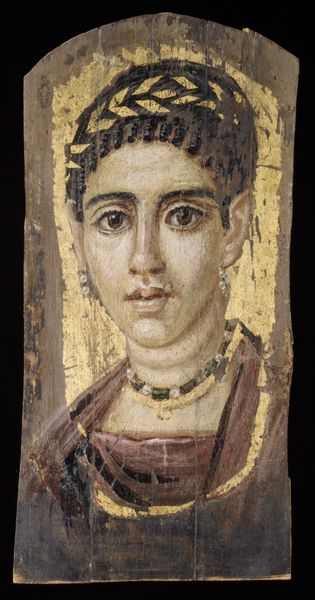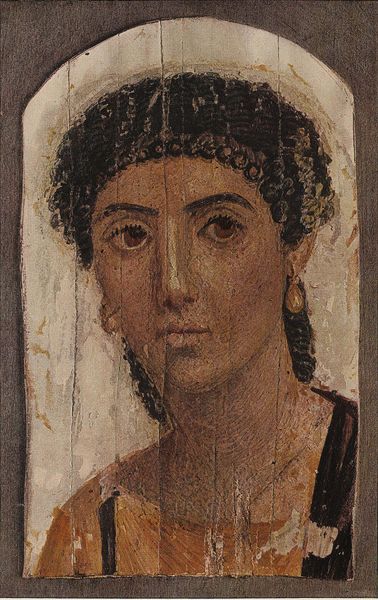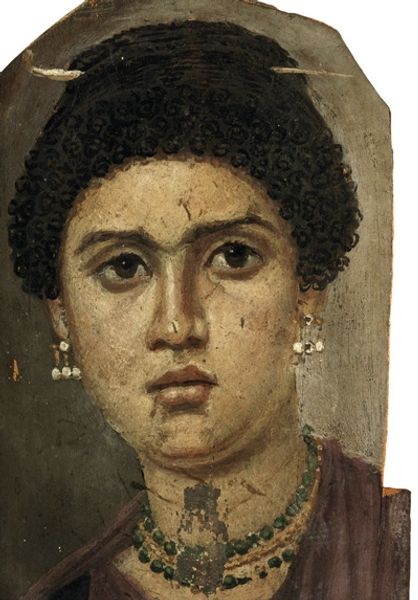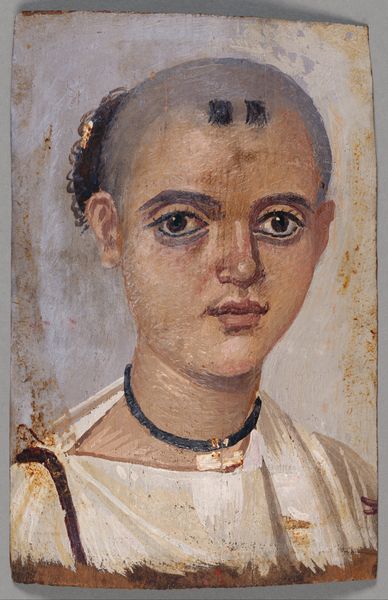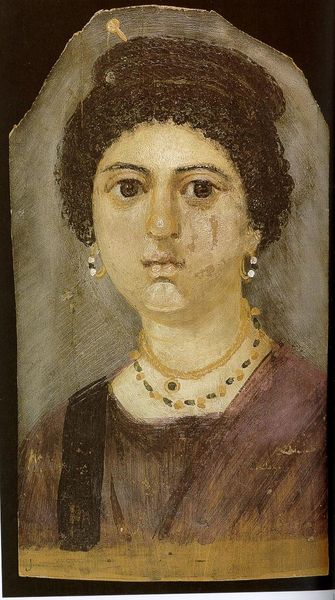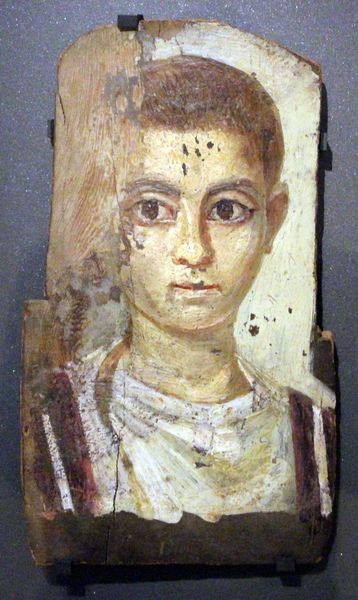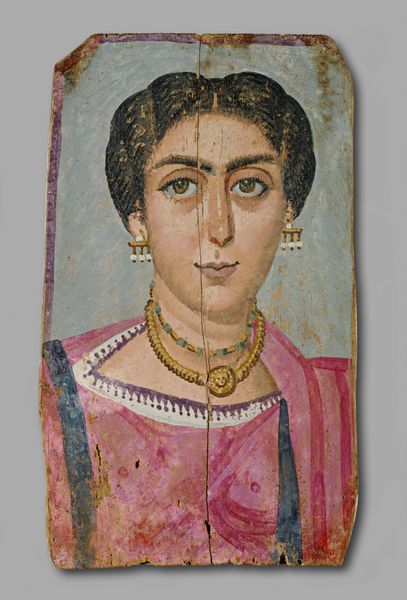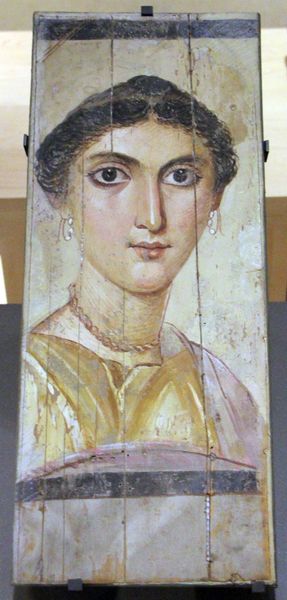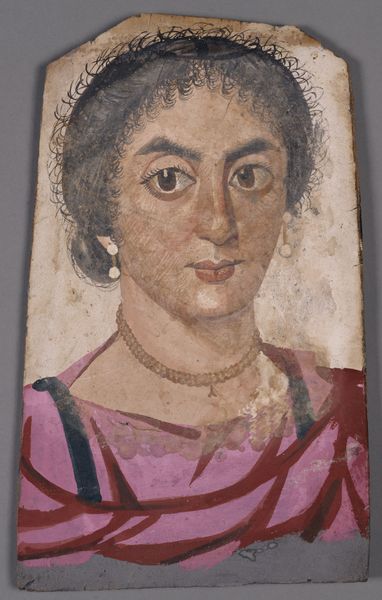
Copyright: Public domain
This is a Fayum portrait of a noblewoman, likely created between 50 and 250 AD, rendered with encaustic or tempera on wood. The composition is dominated by the subject’s face, framed by dark hair and set against a pale, neutral background. Her gaze is direct, engaging the viewer with a sense of immediacy. Notice how the brushstrokes around her clothing are broad and less defined, contrasting with the more detailed rendering of her face. These portraits were funerary objects, placed over the mummified remains of the deceased. In viewing this portrait, we are confronted with the intersection of cultures: Egyptian funerary practices combined with Roman portraiture styles, reflecting the cosmopolitan nature of Roman Egypt. Consider how this direct, lifelike depiction challenges our understanding of death and representation. It invites us to reflect on the complex interplay between identity, representation, and cultural exchange in the ancient world.
Comments
No comments
Be the first to comment and join the conversation on the ultimate creative platform.
